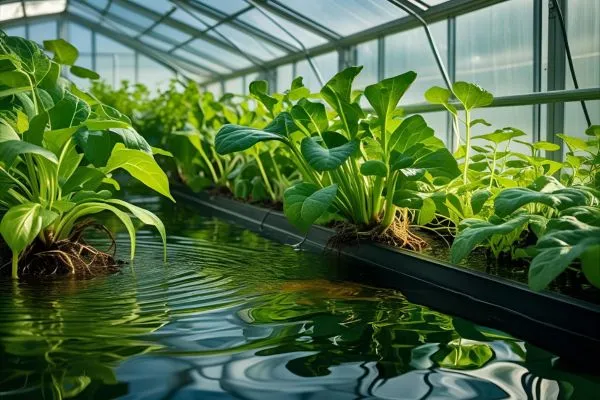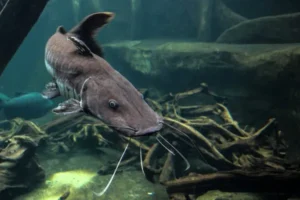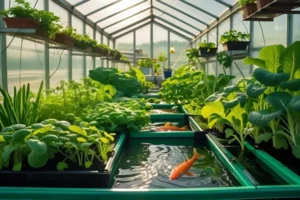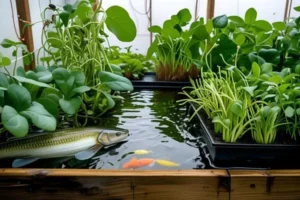Did you know that nearly 70% of first-time aquaponics enthusiasts abandon their systems within the first six months due to persistent plant problems? You’re not alone if you’ve watched your once-promising lettuce turn yellow, your tomatoes refuse to fruit, or your herbs grow at a snail’s pace despite following every guide to the letter.
The frustration is real when your aquaponics plants struggle while your fish seem perfectly healthy. You’ve invested time, money, and hope into creating a sustainable food production system, only to face wilting leaves, stunted growth, and disappointing harvests. Many beginners assume they’re “just not good at this” or that aquaponics is too complicated for home growers.
But here’s the truth: plant problems in aquaponics systems are almost always fixable with the right knowledge and approach. The issue isn’t your green thumb – it’s understanding the unique challenges that aquaponics plants face and having a systematic troubleshooting strategy.
In this comprehensive guide, you’ll discover exactly why your aquaponics plants are struggling and learn proven solutions to transform your system from frustrating to flourishing. We’ll walk through the seven most common culprits behind plant failures, provide step-by-step fixes for nutrient deficiencies, and share advanced techniques that experienced growers use to maximize their harvests.
Why Your Aquaponics Plants Are Struggling: The 7 Most Common Culprits
Understanding why aquaponics plants fail is the first step toward creating a thriving system. After analyzing hundreds of struggling aquaponics setups, seven primary issues emerge time and again. Identifying which of these culprits is affecting your system will save you weeks of trial and error.
1. Nutrient Deficiencies (The Silent Plant Killer) Unlike traditional soil gardening, aquaponics plants rely entirely on fish waste and bacterial conversion for nutrition. When this delicate cycle is disrupted, plants quickly show deficiency symptoms. Iron deficiency is the most common, followed by potassium and calcium shortages.
2. pH Imbalances (The System Destroyer) Your system’s pH affects everything – nutrient availability, bacterial activity, and plant absorption. Most failed aquaponics systems suffer from pH levels outside the critical 6.0-7.0 range, rendering nutrients unavailable even when present.
3. Inadequate Lighting (The Growth Limiter) Many indoor systems fail because LED lights are positioned incorrectly, lack sufficient intensity, or don’t provide the right spectrum. Plants need 14-16 hours of quality light daily for optimal growth.
4. Temperature Fluctuations (The Stress Factor) Rapid temperature changes stress both plants and beneficial bacteria. Systems without proper insulation or climate control experience daily swings that halt plant growth and disrupt the nitrogen cycle.
5. Plant Overcrowding (The Competition Problem) Enthusiastic beginners often plant too densely, creating competition for nutrients and light. Overcrowded plants become weak, susceptible to disease, and produce poor yields.
6. Poor Water Circulation (The Stagnation Issue) Insufficient water flow creates dead zones where nutrients can’t reach plant roots and oxygen levels drop. This leads to root rot and stunted growth, especially in media bed systems.
7. New System Syndrome (The Patience Test) Many plant problems in new systems stem from impatience. It takes 4-6 weeks for beneficial bacteria to establish properly. Planting too early in an immature system guarantees poor results.
Nutrient Deficiency Solutions: How to Identify and Fix Plant Malnutrition
Nutrient deficiencies in aquaponics plants create distinct visual symptoms that serve as your diagnostic roadmap. Learning to read these plant signals will transform you from a frustrated grower into a plant detective who can quickly identify and solve nutrition problems.
Iron Deficiency in Aquaponics Plants
Iron deficiency appears as yellowing between leaf veins while veins remain green (interveinal chlorosis), starting with newer leaves. This is the most common aquaponics plant problem because iron becomes unavailable at pH levels above 7.0.
Quick Fix: Add chelated iron directly to your system at 2 ppm (parts per million). Use DTPA-chelated iron for immediate results. Test and adjust pH to 6.0-6.8 to prevent future iron lockout. Expect improvement within 5-7 days.
Potassium and Phosphorus Problems
Potassium deficiency shows as brown, burnt-looking leaf edges and poor fruit development. Phosphorus deficiency creates dark green or purplish leaves with delayed flowering. Both are common in high-density planting systems where fish waste alone can’t meet plant demands.
Solution: Supplement with seaweed extract (1-2 ml per gallon weekly) for potassium, or add potassium hydroxide for pH adjustment if your system runs acidic. For phosphorus, increase fish feeding slightly or add rock phosphate to media beds at 1 tablespoon per square foot.
Calcium and Magnesium Imbalances
Calcium deficiency appears as brown spots on leaves and blossom end rot in tomatoes and peppers. Magnesium deficiency shows as yellowing between veins on older leaves first. Hard water areas rarely see these issues, but soft water systems struggle.
Fix Strategy: Add calcium carbonate (crushed eggshells or limestone) to media beds for slow-release calcium. For immediate results, use liquid calcium at 50-100 ppm. Epsom salt provides quick magnesium supplementation at 1 teaspoon per 5 gallons.
pH Problems That Kill Aquaponics Plants (And How to Fix Them)
pH is the master key that unlocks or locks away nutrients in your aquaponics system. Even with perfect fish health and adequate nutrients, wrong pH levels will starve your plants and destroy your harvest. Understanding pH management is non-negotiable for aquaponics success.
Optimal pH Ranges for Different Plant Types
Most aquaponics plants thrive in the 6.0-7.0 range, but specific crops have preferences that can maximize your yields. Leafy greens like lettuce, spinach, and kale prefer 6.0-6.5 pH for optimal iron and manganese uptake. At this range, you’ll see vibrant green color and rapid growth.
Fruiting plants including tomatoes, peppers, and cucumbers perform best at 6.2-6.8 pH. This slightly higher range ensures adequate calcium availability, preventing blossom end rot and promoting strong fruit development. Herbs like basil, cilantro, and parsley are more forgiving, thriving anywhere from 6.0-7.0 pH.
Critical Warning: pH above 7.5 locks out iron completely, causing rapid yellowing. pH below 5.5 makes phosphorus unavailable and can harm beneficial bacteria.
Quick pH Adjustment Techniques
Lowering pH (Most Common Need): Use phosphoric acid for gentle, plant-safe pH reduction. Add 1 ml per 10 gallons, wait 30 minutes, then retest. Avoid vinegar – it provides temporary fixes but creates dangerous pH swings.
Raising pH: Potassium hydroxide works fastest for emergency pH increases. Use potassium carbonate for gentler, long-term adjustments. Add calcium carbonate (crushed eggshells) to media beds for natural buffering.
Daily Management: Test pH every morning before feeding fish. pH naturally drops overnight as bacteria produce acids. Maintain consistency by making small daily adjustments rather than large weekly corrections.
Pro Tip: Install an automatic pH controller for systems over 100 gallons. Manual management becomes nearly impossible in larger systems due to natural pH fluctuations.
Environmental Factors Destroying Your Plant Growth
Your aquaponics plants exist in a carefully balanced ecosystem where environmental factors can make or break your success. Even perfect water chemistry means nothing if your environmental conditions are working against plant growth. Here’s how to optimize the three critical environmental factors.
Lighting Issues and Solutions
Insufficient lighting is the hidden killer in most indoor aquaponics failures. Plants need 35-50 watts per square foot of growing space using full-spectrum LED lights. Many beginners use household LED bulbs that lack the intensity and spectrum plants require.
Distance Matters: Position LED grow lights 12-18 inches above leafy greens and 18-24 inches above fruiting plants. Too close causes light burn and leaf curling; too far results in stretching and weak stems.
Duration: Provide 14-16 hours of light daily for optimal photosynthesis. Use timers to maintain consistency – plants respond poorly to irregular lighting schedules.
Temperature Control for Maximum Yield
Temperature fluctuations stress plants and disrupt nutrient uptake. Maintain air temperatures between 65-75°F (18-24°C) for most crops. Lettuce prefers cooler conditions (60-70°F), while tomatoes thrive in warmer ranges (70-80°F).
Water temperature affects everything: Keep system water between 68-72°F (20-22°C). Cold water slows bacterial activity and nutrient cycling. Hot water reduces dissolved oxygen and stresses fish.
Insulation Solutions: Wrap fish tanks and pipes in insulation. Use thermal mass (water barrels) to moderate temperature swings in greenhouse systems.
Air Circulation and Humidity Management
Stagnant air invites fungal diseases and reduces plant transpiration. Install circulation fans to maintain gentle air movement across all plant surfaces. Aim for humidity levels between 50-70% – higher levels promote disease, lower levels stress plants.
Ventilation Strategy: Exhaust hot, humid air from the top of your growing area while bringing fresh air in at plant level. This creates optimal growing conditions and prevents condensation problems.
Plant-Specific Troubleshooting Guide
Different plant categories face unique challenges in aquaponics systems. Understanding these specific issues allows you to provide targeted solutions rather than generic treatments that may not address the root problem.
Leafy Greens Problems and Solutions
Tip Burn: Brown, crispy leaf edges on lettuce and spinach indicate potassium deficiency or rapid growth outpacing nutrient uptake. Solution: Reduce lighting intensity by 20% and supplement with liquid seaweed extract at 2 ml per gallon weekly.
Bolting: Premature flowering in lettuce occurs from temperature stress or day length changes. Maintain temperatures below 70°F (21°C) and provide consistent 14-hour light cycles. Choose bolt-resistant varieties like ‘Summer Crisp’ for warm conditions.
Soft, Mushy Leaves: Usually indicates poor water circulation or bacterial soft rot. Increase water flow rates and remove affected plants immediately. Improve spacing between plants for better air circulation.
Fruiting Plants Common Issues
Blossom End Rot: Dark, sunken spots on tomato and pepper bottoms signal calcium deficiency or inconsistent watering. Add crushed eggshells to media beds and maintain steady water levels. Never let grow beds dry out completely.
Poor Fruit Set: Inadequate pollination or temperature extremes prevent fruit development. Hand-pollinate using a small brush or install small fans for better air movement. Maintain temperatures between 70-80°F (21-27°C) during flowering.
Yellowing Lower Leaves: Normal for fruiting plants but accelerated yellowing indicates nitrogen deficiency. Increase fish feeding by 10-15% or add supplemental fish emulsion at half-strength.
Herbs and Their Unique Challenges
Weak Flavor: Herbs grown too fast with excess nitrogen produce large, flavorless leaves. Reduce feeding and increase light intensity to stress plants slightly – this concentrates essential oils.
Leggy Growth: Insufficient light causes herbs to stretch and become weak. Position lights closer (10-12 inches) and pinch growing tips regularly to encourage bushy growth.
Sudden Wilting: Basil is particularly sensitive to cold water. Maintain water temperatures above 70°F (21°C) and protect from cold drafts.
Advanced Plant Care Techniques for Aquaponics Success
Once you’ve mastered the basics, these advanced techniques will elevate your aquaponics system from functional to exceptional. These strategies maximize yields, improve plant health, and create a more resilient growing ecosystem.
Pruning and Training Methods
Strategic Pruning: Remove lower leaves on fruiting plants once they reach 12 inches tall. This directs energy to fruit production and improves air circulation. For tomatoes, prune suckers (shoots between main stem and branches) weekly to maintain single-stem growth.
Training Techniques: Use the “string method” for vertical support. Run biodegradable twine from media bed to ceiling support, wrapping plants as they grow. This maximizes vertical space and keeps heavy fruits supported.
Succession Pruning: Cut lettuce and herbs at 2-inch height rather than harvesting entire plants. This “cut-and-come-again” method provides continuous harvests for 3-4 cycles before replanting, maximizing space efficiency.
Companion Planting Strategies
Beneficial Partnerships: Plant basil near tomatoes to improve flavor and repel pests naturally. Lettuce grows well in the shade of taller plants, making efficient use of vertical space. Marigolds planted in media beds deter aphids and whiteflies.
Root Zone Optimization: Combine deep-rooted plants (tomatoes) with shallow-rooted plants (lettuce) in the same media bed. This creates natural stratification and maximizes nutrient uptake at different depths.
Nitrogen Management: Pair heavy nitrogen feeders (leafy greens) with light feeders (herbs) to balance nutrient consumption across your system.
Seasonal Adjustments
Winter Optimization: Reduce lighting duration to 12 hours and lower temperatures 5-10°F to reduce plant metabolism and energy costs. Focus on cold-tolerant crops like spinach and kale.
Summer Management: Increase ventilation, add shade cloth at 30% density, and boost water circulation. Switch to heat-tolerant varieties and increase feeding frequency as fish metabolism accelerates.
Transition Periods: Gradually adjust lighting and temperature over 7-10 days rather than making sudden changes that shock plants.
Conclusion
Transforming your struggling aquaponics plants into thriving, productive crops isn’t about having a “green thumb” – it’s about understanding the unique requirements of soilless growing and applying systematic solutions. We’ve covered the seven most common culprits behind plant failures, from nutrient deficiencies and pH imbalances to environmental factors that silently sabotage your success.
Remember that aquaponics plant problems are rarely isolated issues. A pH problem often triggers nutrient deficiencies, which then stress plants and make them vulnerable to environmental challenges. This interconnected nature means that fixing one issue often resolves multiple symptoms simultaneously.
The key to long-term success lies in developing your observation skills and maintaining consistent monitoring routines. Check pH daily, observe your plants for early warning signs, and make small adjustments rather than dramatic changes. Your plants will communicate their needs through visual symptoms – learning this language transforms you from a reactive troubleshooter into a proactive grower.
As you implement these solutions, document what works in your specific system. Every aquaponics setup has unique characteristics, and building your own troubleshooting playbook will make you increasingly effective over time.
Ready to turn your plant problems into plant success? Start by testing your system’s pH today and addressing the most obvious symptoms first. Small improvements compound quickly in aquaponics – your next harvest could be your best yet.
Frequently Asked Questions (FAQ)
How long does it take to see improvement after fixing plant problems?
Most nutrient deficiency corrections show visible improvement within 5-7 days. Iron deficiency responds fastest, often showing greener leaves within 48 hours. pH adjustments take 3-5 days to fully impact nutrient availability. Environmental changes like improved lighting or temperature control may take 1-2 weeks to show significant results.
Should I remove plants that are severely damaged or try to save them?
Remove plants with more than 70% damaged foliage – they rarely recover and may harbor diseases that spread to healthy plants. Plants with minor damage (less than 30% affected leaves) usually recover well with proper treatment. Focus your energy on preventing problems in healthy plants rather than nursing severely damaged ones.
How expensive are the supplements needed to fix nutrient deficiencies?
Most supplements are surprisingly affordable. Chelated iron costs around 15 to 20 dollars and treats deficiencies for 6 plus months. Seaweed extract costs 10 to 15 dollars and lasts 3 to 4 months with weekly applications. pH adjustment chemicals cost 10 to 20 dollars annually for most home systems. Prevention through proper system management is always cheaper than treatment.
Can I use regular garden fertilizers in my aquaponics system?
Never use traditional fertilizers – they contain salts and chemicals that harm fish and beneficial bacteria. Only use aquaponics-safe supplements like chelated iron, seaweed extract, and specific pH adjusters designed for aquatic systems. When in doubt, choose supplements labeled “aquarium safe” or “hydroponic grade.”
Why do my plants look healthy but produce poor yields?
Healthy-looking plants with poor yields usually indicate inadequate lighting or improper plant spacing. Increase light intensity by 20% and ensure proper spacing – leafy greens need 4 to 6 inches apart, fruiting plants need 12 to 18 inches. Also check if you’re harvesting correctly – many crops benefit from succession harvesting rather than complete removal.



